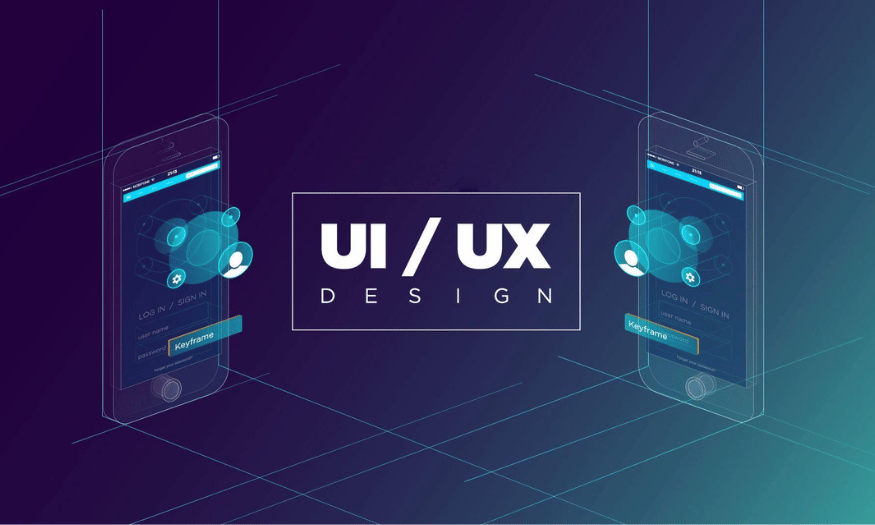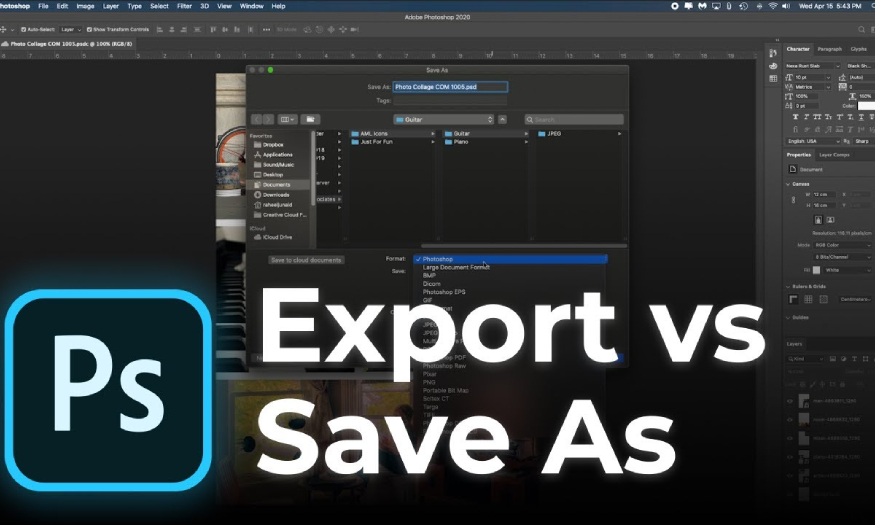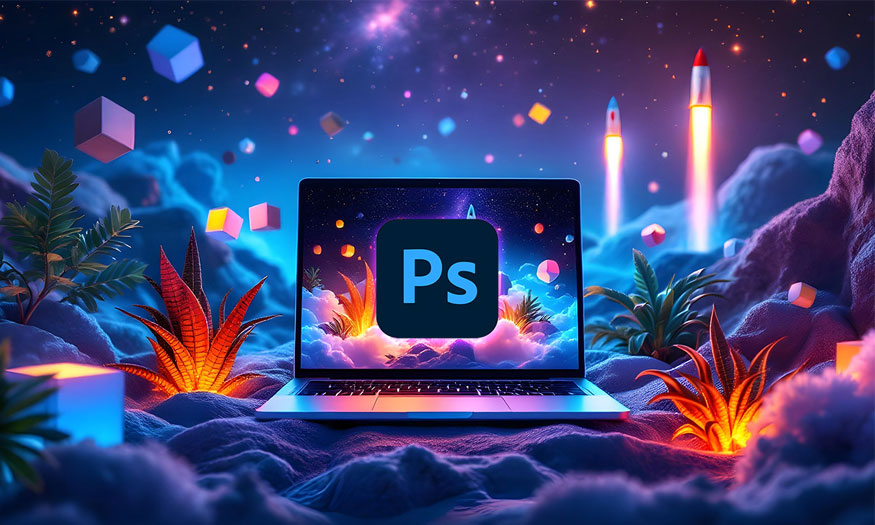Best Selling Products
The Most Standard UI, UX Design Process You Should Know
Nội dung
- 1. What is UI, UX?
- 1.1. What is UI?
- 1.2. What is UX?
- 2. What is the difference between UI, UX?
- 2.1. Purpose
- 2.2. Implementation process
- 3. In which fields are UI and UX applied?
- 4. UI, UX which is more important?
- 5. UI, UX design process
- 5.1. Research & Discovery
- 5.2. Ideation & Conceptualization
- 5.3. Wireframing
- 5.4. Interface Design (UI Design)
- 5.5. Testing & Feedback
- 5.6. Implementation & Handoff
- 5.7. Monitoring & Optimization
- 6. Conclusion
In today's digital world, user interface (UI) and user experience (UX) design play an important role in creating engaging and easy-to-use digital products. The UI/UX design process is not simply about creating an eye-catching interface, but also about researching, analyzing and understanding user needs to bring the best experience. In this article, Sadesign will delve into the important steps in the UI/UX design process, from user research, wireframing, to testing and adjusting the product.

In today's digital world, user interface (UI) and user experience (UX) design play an important role in creating attractive and easy-to-use digital products. The UI/UX design process is not simply about creating an eye-catching interface, but also about researching, analyzing and understanding user needs to bring the best experience. In this article, Sadesign will delve into the important steps in the UI/UX design process, from user research, wireframing, to testing and adjusting the product. Through that, you will grasp the basic and necessary knowledge to apply to your design work, helping the product not only attract but also truly meet user expectations.
1. What is UI, UX?
In the era of rapid technological development, the concepts of UI (User Interface) and UX (User Experience) have become indispensable terms in the field of digital product design.
1.1. What is UI?
UI (User Interface) is a concept that refers to the design of the user interface of a website or application. The user interface is where the user communicates with the system, including elements such as buttons, menus, images, text, and other components. A beautiful interface not only attracts attention but also helps users easily search and manipulate information. The sophistication in UI design will create a friendly space, helping users feel comfortable and confident when using the product.
It is worth noting that UI can directly impact the user experience. A well-designed interface will help users easily find the necessary information and perform operations without difficulty. For example, a website with a clear layout and easily recognizable function buttons will help users not only save time but also increase efficiency in interacting with the product.
.png)
1.2. What is UX?
UX (User Experience) refers to creating the best user experience when using a website or application. This includes not only the arrangement of interface elements but also the feeling and satisfaction that the user gets during the usage process. UX optimizes the experience by understanding the needs and behaviors of users and designing effective solutions.
For example, a website with an easy-to-use menu, easy-to-press buttons, and effective search filters will help users find the products they need quickly and conveniently. Furthermore, smooth visual movements also contribute to a seamless and engaging experience. All of these factors not only make users feel comfortable, but can also increase conversion rates and keep them on the page longer.
.png)
2. What is the difference between UI, UX?
The difference between UI and UX is clear but also subtle. While UX (User Experience) focuses on describing the overall user experience with a product or service, UI (User Interface) focuses on designing the interface that users will interact with. Both concepts are closely related but serve different purposes in the design process.
2.1. Purpose
The purpose of UI is to create a beautiful and easy-to-use interface that makes it easy for users to find information and perform operations. A good interface will not only satisfy users but also make them feel comfortable when interacting with the product. On the contrary, UX aims to create the best user experience, increase conversion rates and retain users. A good UX will make users feel satisfied and want to return to use the product again and again.
2.2. Implementation process
The UI design process includes steps such as interface design, style guide development, and interface testing. UI designers need to pay attention to every little detail, from colors, fonts to the layout of components. Meanwhile, the UX design process includes user analysis, wireframe design, prototype building, and user experience testing. UX Designers need to understand user needs to create appropriate solutions, thereby optimizing the product experience.
.png)
3. In which fields are UI and UX applied?
UX and UI design is not only limited to the field of website and mobile application design but also present in many other fields, creating practical values for users. Especially, in the modern technology era, optimizing user experience has become a decisive factor for the success of a product. By understanding the needs and habits of users, designers can significantly improve the way users interact with the product, thereby improving efficiency and satisfaction.
In the field of web and mobile app design, UX and UI play an extremely important role. They not only affect the interface but also directly impact conversion rates and user retention. If a website has an attractive interface but a poor user experience, users will quickly leave and move on to other options. Therefore, creating a consistent design, from interface to experience, is essential to attract and maintain users' attention.
In addition, UX and UI are also widely applied in product design. Electronic products, electrical appliances and household appliances all need to be designed to be easy to use and consumer-friendly. A product not only needs to be beautiful but also easy to operate so that users can experience it in the most convenient way. Applying UX and UI principles in product design helps create positive experiences, thereby improving product quality and customer satisfaction.
.png)
4. UI, UX which is more important?
When it comes to UI Design (User Interface) and UX Design (User Experience), both are essential components in developing a website or application. If you only focus on UI and ignore UX, you may end up with a beautiful interface but it is not user-friendly. This can lead to users having difficulty using the product, which in turn reduces conversion rates and frustrates customers.
On the other hand, if you only focus on UX without paying attention to UI, you may have difficulty creating an attractive and consistent interface. A beautiful interface not only enhances brand value but also creates a deep impression in the user's mind. In fact, a product with an attractive interface will attract more users and create a more positive impression of the brand.
So, it can be said that both UX and UI are important and need to go hand in hand. A good design not only needs to be beautiful but also needs to bring the best user experience. The perfect combination of UI and UX will help you create a product that is both visually appealing, easy to use and effective in meeting the needs of consumers.
5. UI, UX design process
The UI and UX design process is a complex journey, consisting of many closely linked steps aimed at optimizing the user experience. The ultimate goal of this process is to create a product or service that is not only beautiful but also easy to use, meeting the needs of the user. The steps in this process often range from research, ideation, to implementation and product improvement.
Each step in the design process has its own important role to play, helping designers better understand the requirements of the project, users, and the market. The combination of these steps will ensure that the final product not only meets but exceeds the expectations of the user.
5.1. Research & Discovery
The first step in the design process is research and information gathering. This includes defining the project’s business goals, target users, and basic requirements. Understanding the goals will not only guide the design process, but will also help create specific and effective solutions.
In addition, competitor analysis is an indispensable part of this stage. By evaluating similar products on the market, designers can identify the strengths and weaknesses of their competitors, thereby finding opportunities to improve their products. Conducting interviews or surveys of users is also an important step, helping to collect information about their needs, desires and usage habits, thereby creating better designs.
5.2. Ideation & Conceptualization
Once you have gathered enough information, the next step is to sketch and brainstorm. Creating user personas – characters that represent different user groups – helps designers better visualize the target audience and their typical behaviors. This not only helps identify what users need, but also helps come up with appropriate design solutions.
User journey mapping is also important at this stage. This map shows the key touchpoints that users will experience when interacting with the product. Additionally, sketching out initial ideas for the interface will help designers get a better overview of the product. Using design tools like Figma can make creating sketches easier and more efficient.
.png)
5.3. Wireframing
The next step in the process is creating a wireframe, which is a crucial part of defining the basic structure of the interface without getting into graphic detail. Wireframes allow designers to visualize how elements will be arranged on the page and how users will interact with them. This is an important step to ensure that everything is laid out logically and is easy to understand.
Defining the user flow is also an essential part of this phase, helping designers understand how users will move through the product’s screens and functions. Additionally, advertising design can assist in building visual elements that engage users from the first contact. Clear frameworks will help future development become more coherent and effective.
5.4. Interface Design (UI Design)
Interface design is the most important step in the product development process, where initial ideas are transformed into concrete images. This stage involves creating detailed design elements such as colors, fonts, icons, and other graphic elements. Each of these elements not only has an aesthetic role but also affects the way users interact with the product. Choosing the right colors can create positive emotions, while clear fonts make it easy for users to read and understand the content.
Another important part of the interface design phase is prototyping. Interactive prototypes allow users to experience the product as if they were actually using it. This not only helps to uncover design issues, but also provides an opportunity to gather feedback from users before the product is officially released. This interaction provides insight into how users will perceive and use the product, thereby optimizing the user experience.
5.5. Testing & Feedback
Usability testing is an essential stage to evaluate whether the product meets the needs and expectations of the users. During this stage, the prototype is tested by real users, helping to identify issues in the interface and the way users interact with the product. User feedback is invaluable, as it not only points out areas for improvement but also helps designers gain a better understanding of user behavior and habits.
Based on the feedback gathered, designers will adjust and improve the design through iteration. This may include changing the layout, colors, or arrangement of interface elements. This process continues until the product achieves the highest level of usability and user satisfaction.
5.6. Implementation & Handoff
Once the design process is complete, the next step is to deploy and hand over the product to the developers. This is the stage where the designers will hand over all the detailed design documentation, including mockups, style guides, and specific instructions on how the product should function. This handover needs to be done carefully to ensure that the developers have all the information they need to do their jobs.
Close collaboration between designers and developers is essential during this phase. Regular communication ensures that the final product not only looks exactly as designed, but also functions as expected. This not only saves time and resources, but also ensures that the product is developed smoothly and efficiently.
.png)
5.7. Monitoring & Optimization
After a product is launched, it is essential to track its performance to ensure that it works well in the real world. Post-launch analysis allows designers and developers to gain a better understanding of how users interact with the product. By collecting data from analytics tools, such as Google Analytics, the design team can identify areas for improvement and potential problems.
Continuous improvement is an important part of the design process. Based on the data collected and feedback from users, the design team needs to constantly update and optimize the product. This not only helps the product stay attractive and effective, but also ensures that it always meets the changing needs of users.
6. Conclusion
In short, the UI/UX design process is a journey that requires exploration, creativity, and patience. From user research to implementation and testing of the final product, each step brings its own value, contributing to creating a perfect user experience. To succeed in this field, designers need to constantly learn and improve, mastering the latest tools and methods.












































